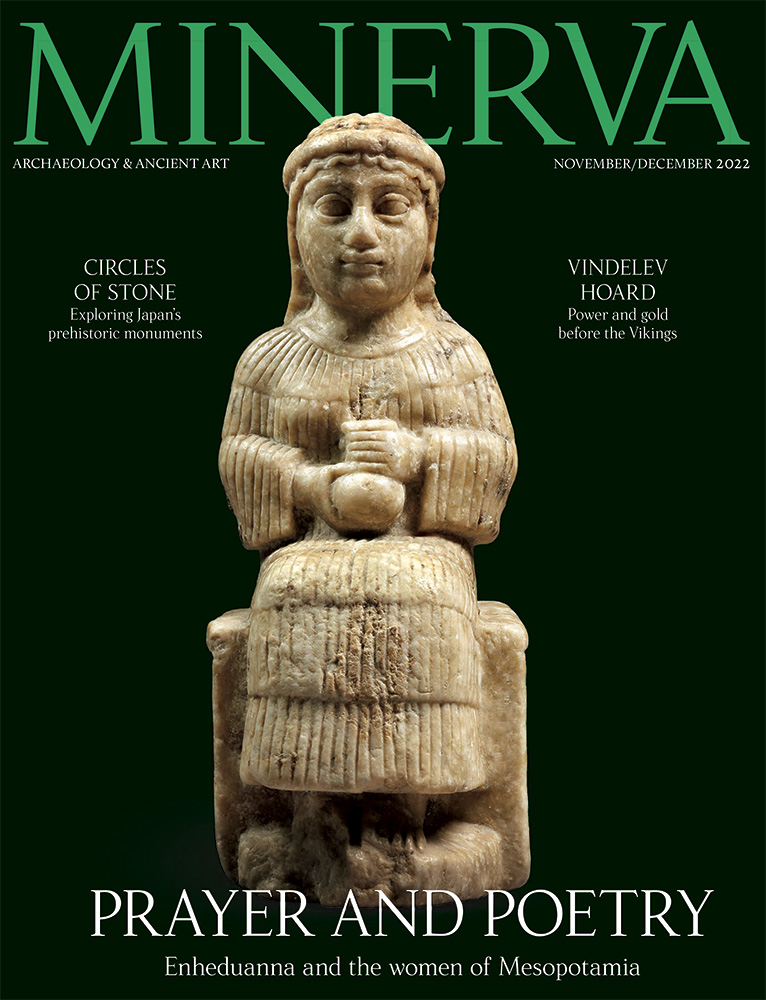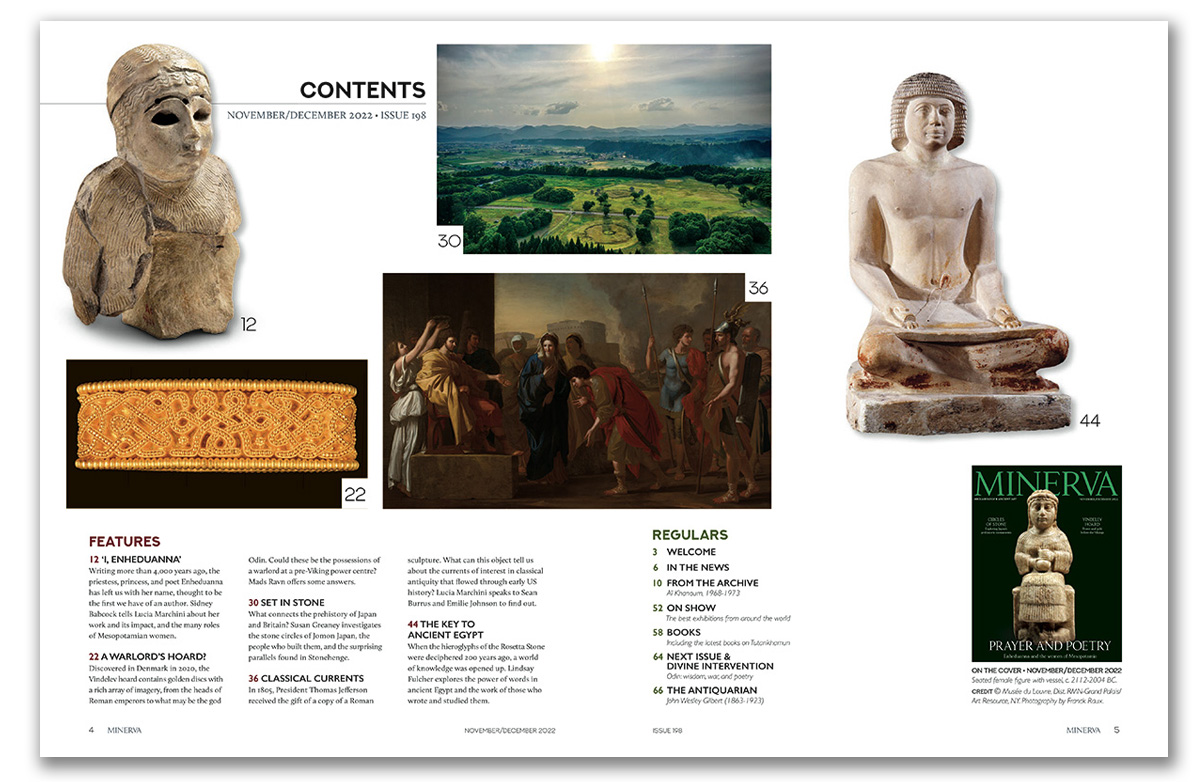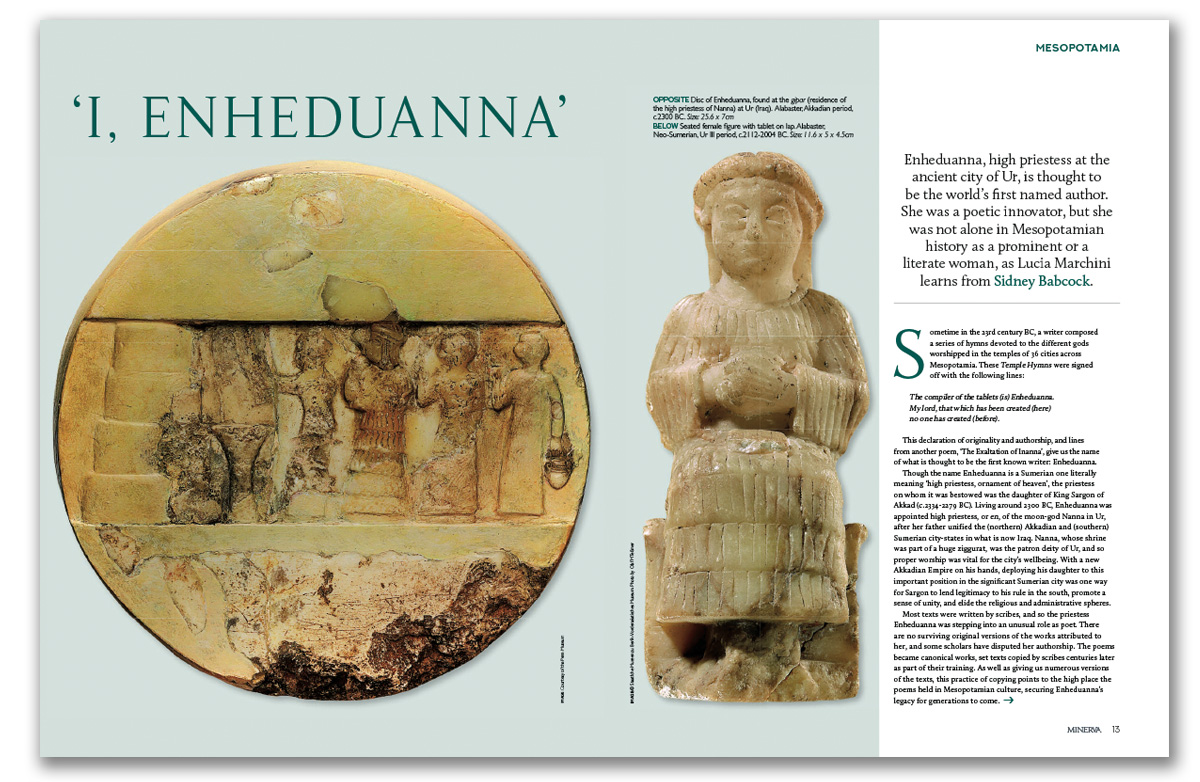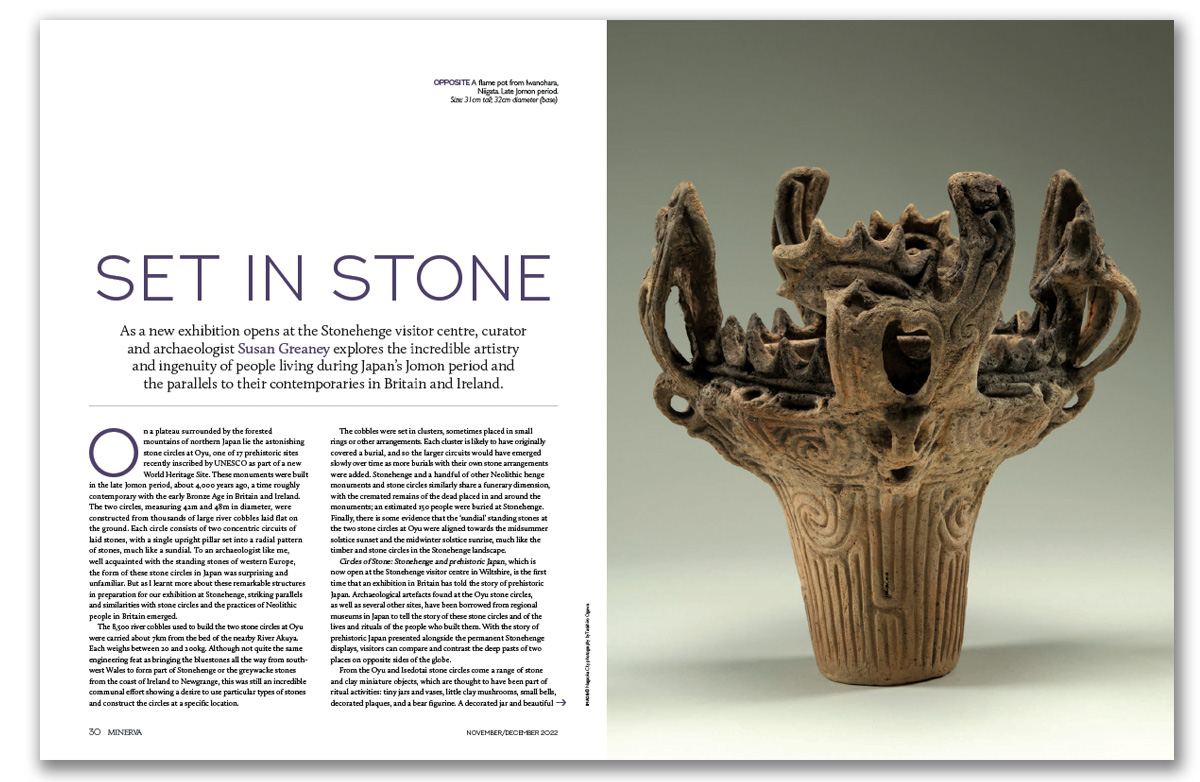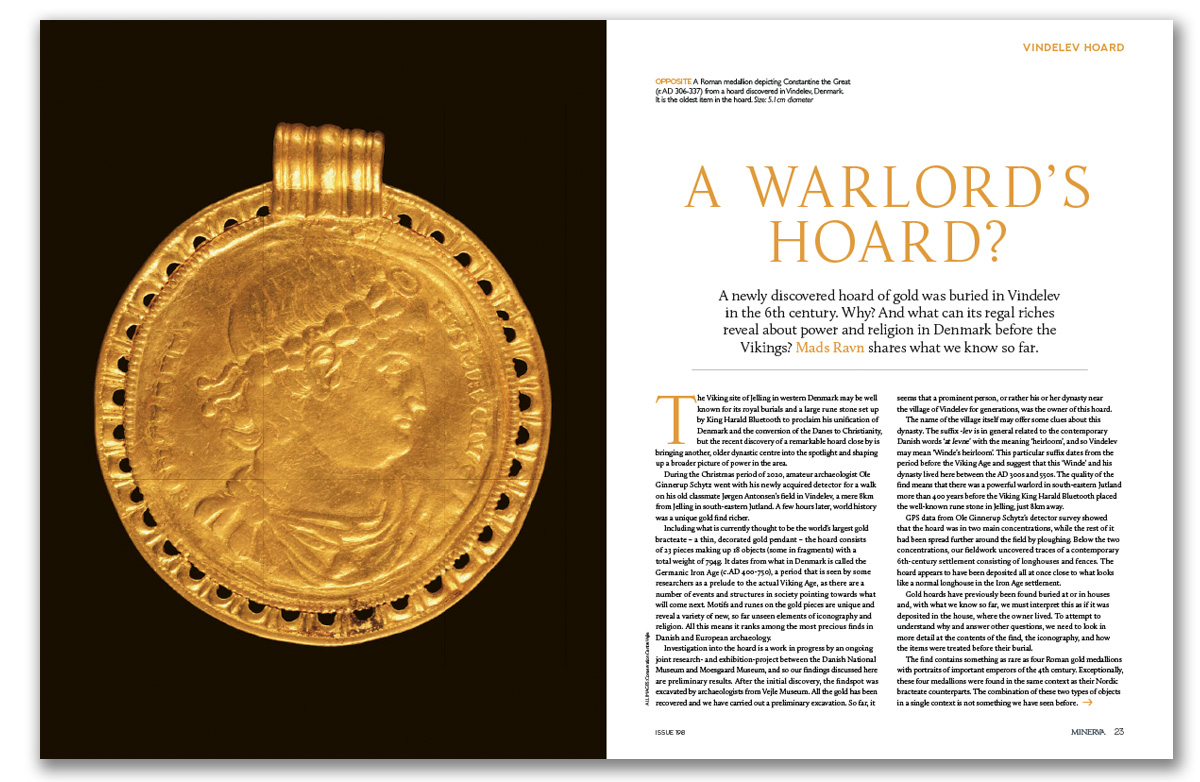Living and writing in the Sumerian city of Ur around 2300 BC, Enheduanna is the first named poet that we know of. Her hymns to the gods give us her name, some autobiography, and a new, warlike image of the goddess of love and fecundity Inanna. She was the first person to hold the title en, or high priestess, of the moon-god Nanna – a tradition upheld by royal women (with some breaks) into the 1st millennium BC. Yet for centuries before her, other high-ranking women in Mesopotamia had been playing an essential part in spiritual life, honouring the gods through offerings at temples where they set up small statues of themselves, but also in administration and the economy. For our cover feature, we delve into the world of Enheduanna.
In Denmark, Mads Ravn has been investigating a remarkable gold hoard discovered by a metal detectorist in 2020. Nordic bracteates inscribed with runes mingle with Roman medallions bearing emperors’ heads in the spectacular assemblage at Vindelev. Buried in the 6th century AD at a site intriguingly close to the later Viking centre of Jelling, what can the hoard tell us about power in the Germanic Iron Age?
Just as striking as these gold finds are the elaborate flame pots of prehistoric Jomon Japan. The people who made them, as well as distinctive cord-marked pottery and ceramic dogu figurines representing the human form, also set up stone circles, which like Stonehenge, Susan Greaney writes, show a preoccupation with sourcing the right stone and solar alignments.
Shared interests run through our next feature, too, in which we examine the relationship between the young United States of America in the 18th and 19th centuries and the ancient Mediterranean. Architecture, collections of moralising art, poetry, and friendship highlight the breadth and depth of these interactions with the distant past.
We return to the subject of writing as Lindsay Fulcher explores a new exhibition on ancient Egyptian hieroglyphs that celebrates the bicentenary of the deciphering of the Rosetta Stone. The beautiful, and for a long time mysterious, hieroglyphs have the power to entice and inform, but for the ancient Egyptians the spoken word was even more potent than the written.
Finally, we mark another anniversary in Egyptology with a special review of some of the latest books on Tutankhamun, whose tomb was discovered 100 years ago.

